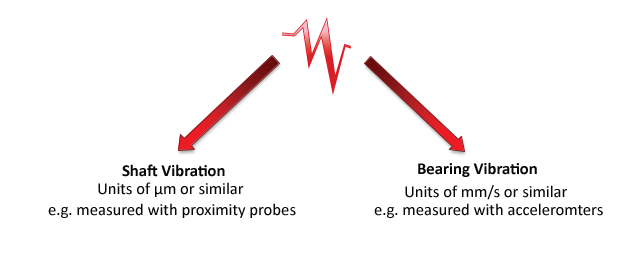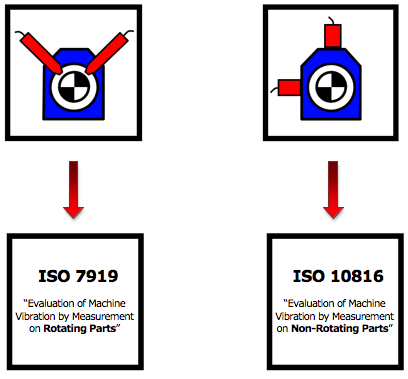ISO 10816 & 7919 Standards
For most situations the overall amplitude of vibration is the most important assessment criteria, and in this regard the standards are relatively useful. The two most important standards are ISO 10816 and ISO 7919, which differ in type of the vibration being assessed:
- - Use ISO 10816 if you are measuring bearing vibration (using an accelerometer or velocity transducer, with values in mm/s or similar).
- Use ISO 7919 if you are measuring shaft vibration (using a proximity probe, with values in µm or similar).
Both of these standards are sub-divided into different parts for machine types. To decide which standard is applicable, see below:


ISO 2372 (10816) Standards provide guidance for evaluating vibration severity in machines operating in the 10 to 200Hz (600 to 12,000 RPM) frequency range. Examples of these types of machines are small, direct-coupled, electric motors and pumps, production motors, medium motors, generators, steam and gas turbines, turbo-compressors, turbo-pumps and fans. Some of these machines can be coupled rigidly or flexibly, or connected though gears. The axis of the rotating shaft may be horizontal, vertical or inclined at any angle. Use the chart below combined with additional factors described in this manual to judge the overall vibration severity of your equipment.